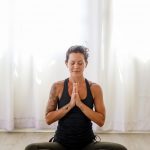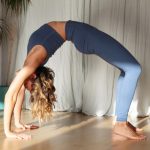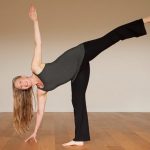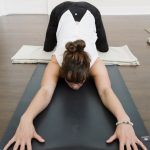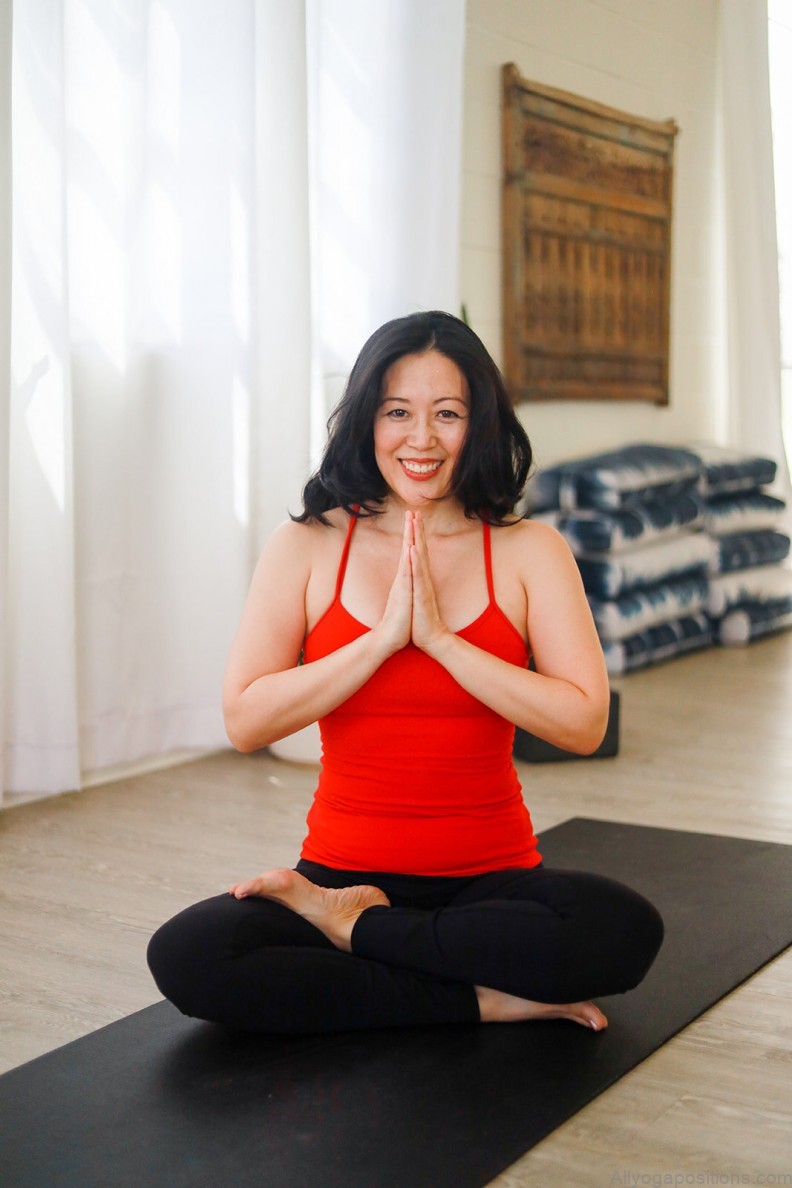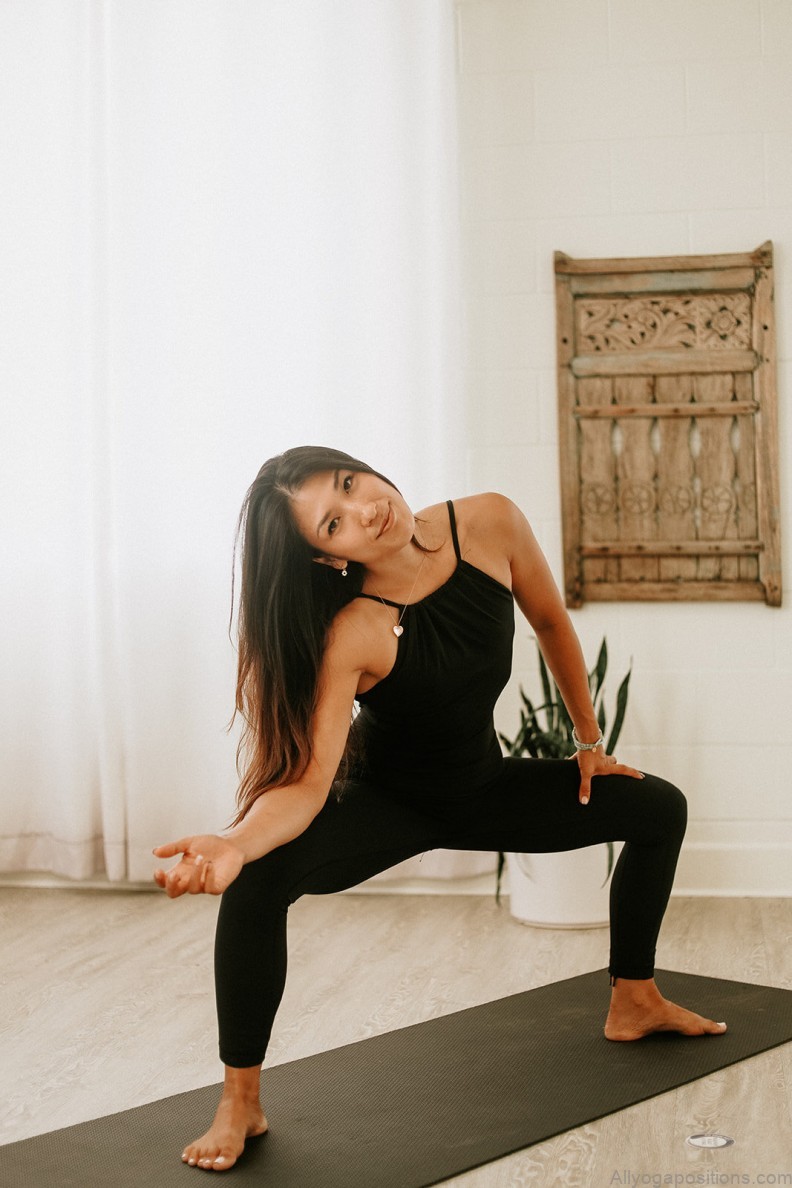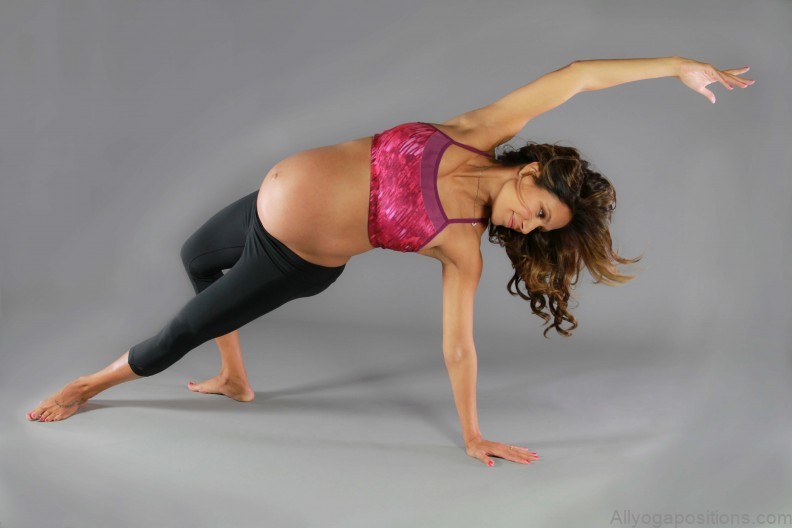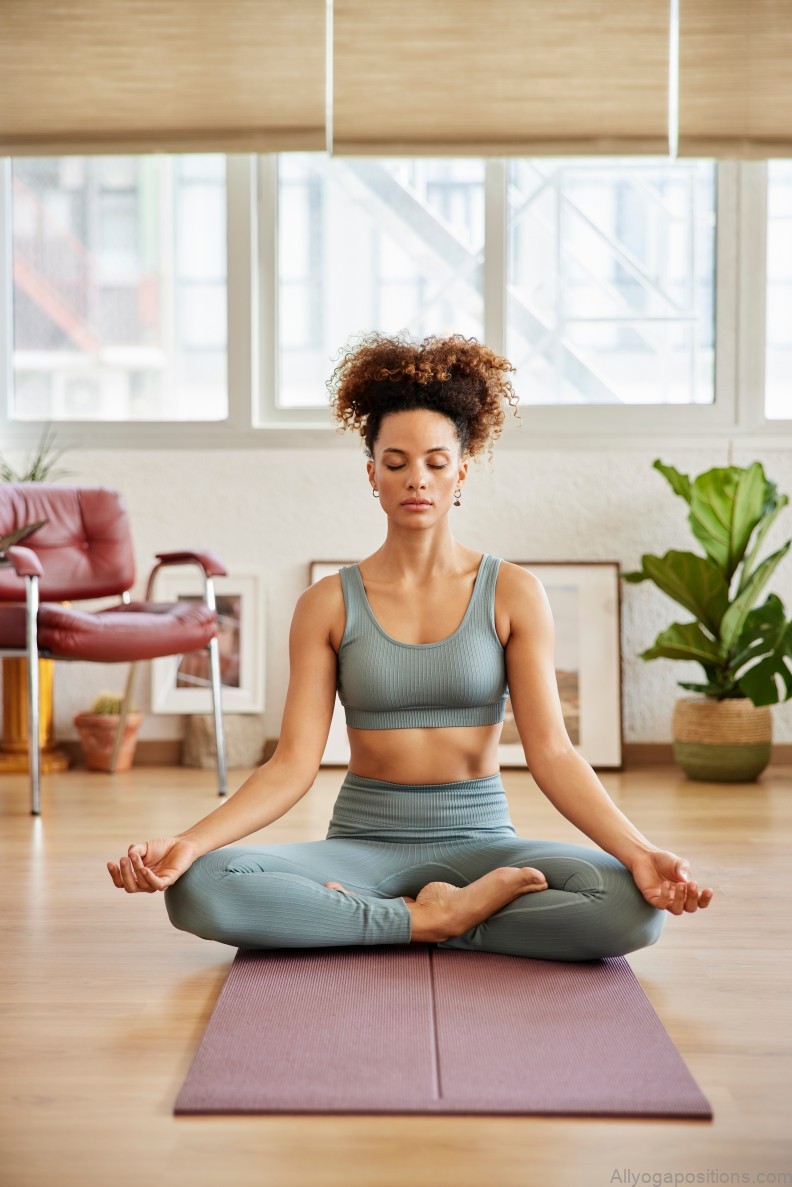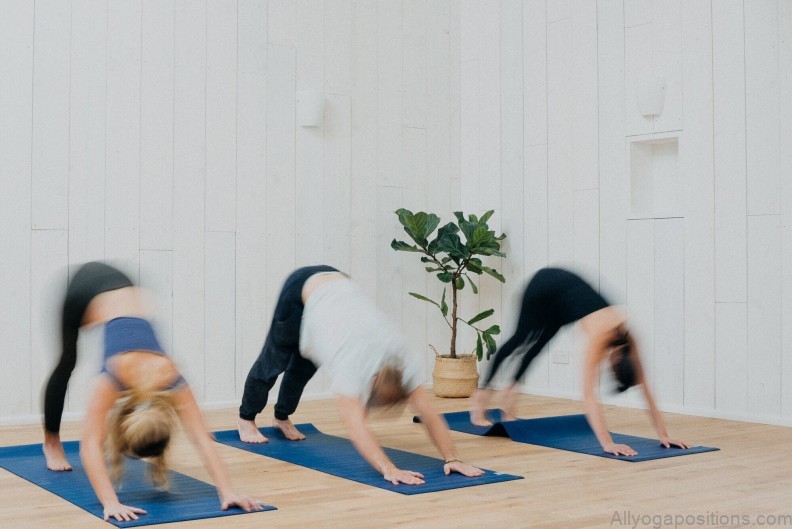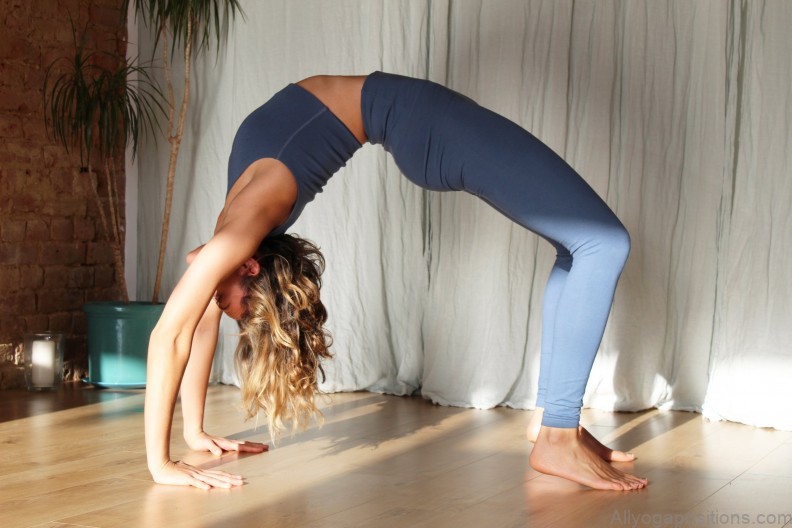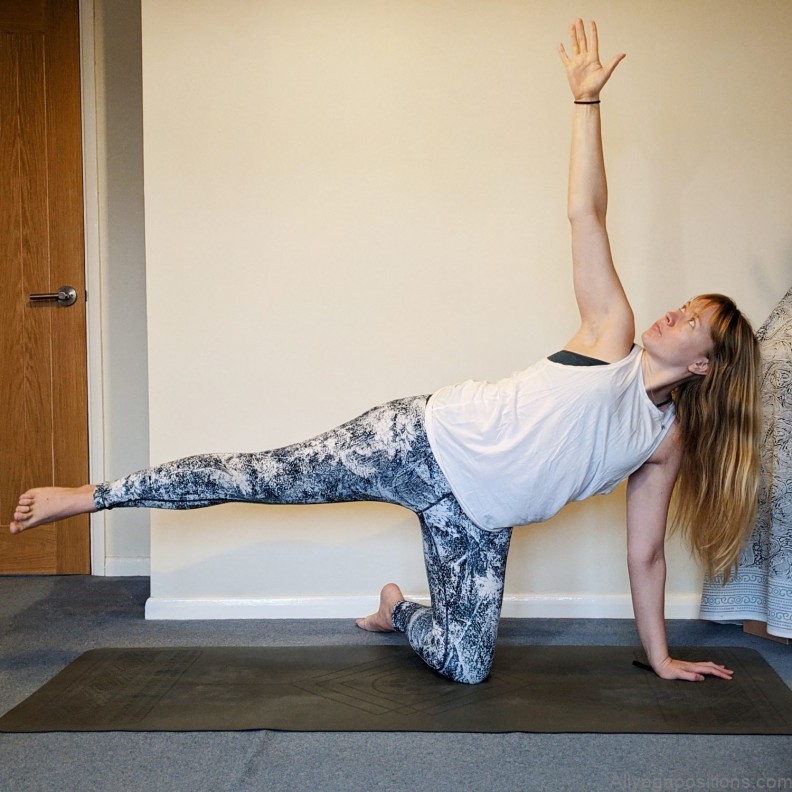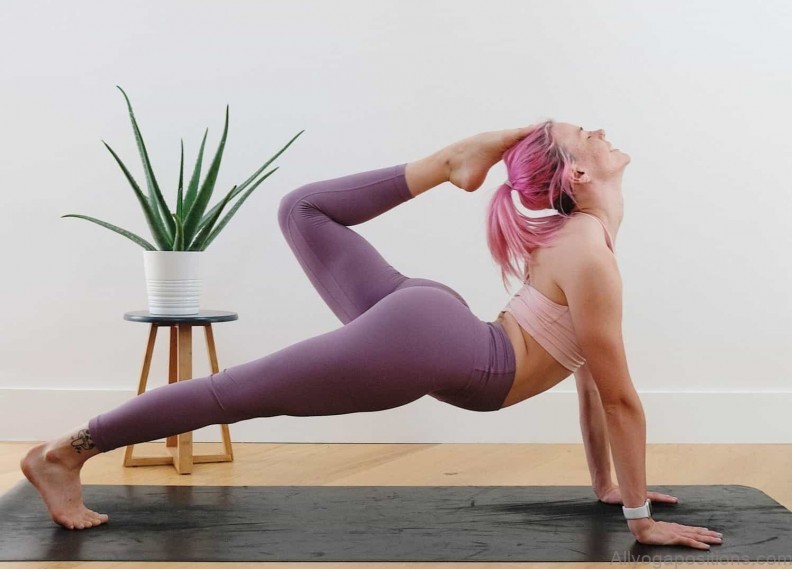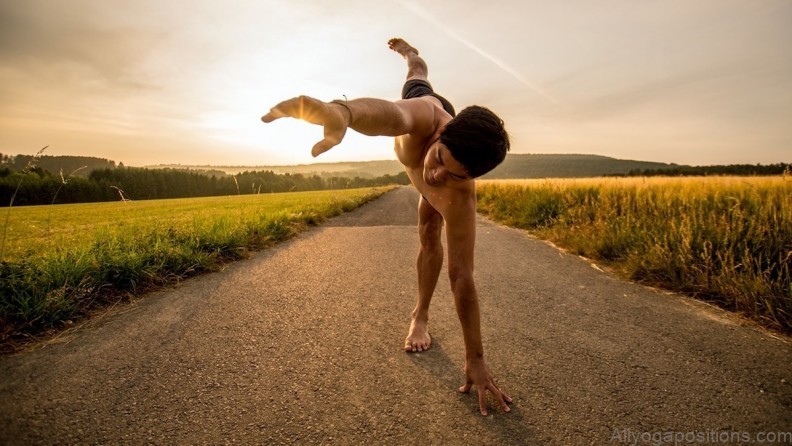Introduction:
The Half Moon Yoga Pose, also known as Ardha Chandrasana, is a beautiful and graceful posture that embodies balance, strength, and inner harmony. It is a standing balancing pose that requires focus, stability, and a deep connection with your breath. In this article, we will explore the Half Moon Pose in detail, uncovering its physical benefits, its impact on mental and emotional well-being, as well as providing a step-by-step guide, modifications, variations, and essential tips for a successful practice.
1: Mastering the Basics: Step-by-Step Guide to Half Moon Pose
To begin practicing Half Moon Pose, start in a standing position at the top of your mat. Follow these steps:
- Start by grounding yourself in Tadasana, the Mountain Pose. Stand tall with your feet hip-width apart, aligning your spine and lifting your chest.
- Shift your weight onto your left foot and lift your right foot off the ground, bringing your right knee towards your chest.
- Reach down with your right hand and take hold of your right ankle or calf, finding your balance.
- Extend your right leg straight out to the side, parallel to the floor. Ensure that your standing leg remains engaged and your hips stay square to the front of the mat.
- Slowly rotate your upper body to the left, extending your left arm towards the sky, while maintaining a straight line from your right heel to your left fingertips.
- Gaze upwards, finding a point of focus to help maintain your balance. Breathe deeply and hold the pose for several breaths.
- To release the pose, slowly return to a standing position and repeat on the opposite side.
Exploring the Half Moon Yoga Pose: Balance, Strength, and Inner Harmony Photo Gallery
2: The Physical Benefits of Half Moon Pose: Strength, Flexibility, and Balance
Half Moon Pose offers numerous physical benefits that contribute to the overall well-being of the body. Here are some key benefits:
- Improved Balance: Practicing Half Moon Pose challenges your sense of balance, as you need to stabilize on one leg while extending the other leg and upper body. Regular practice can improve your proprioception and enhance your overall balance.
- Increased Strength: Holding Half Moon Pose requires strength and stability in the legs, core, and supporting muscles. The pose strengthens the quadriceps, hamstrings, glutes, and abdominal muscles, contributing to improved overall strength and stability.
- Enhanced Flexibility: While in Half Moon Pose, the hamstrings, hips, and inner thigh muscles are stretched. Over time, this can lead to increased flexibility and range of motion in these areas.
- Improved Spinal Alignment: The twisting motion involved in Half Moon Pose helps to mobilize and lengthen the spine, promoting better posture and spinal alignment.
- Strengthened Ankles: Balancing on one foot in Half Moon Pose strengthens the muscles around the ankle joint, helping to improve stability and prevent injuries.

Emotional Well-being: Finding Inner Harmony in Half Moon Pose
Half Moon Pose not only benefits the physical body but also has a profound impact on mental and emotional well-being. Here’s how:
- Enhanced Focus and Concentration: Practicing Half Moon Pose requires concentration and mindfulness. As you find your balance and hold the pose, you cultivate a focused state of mind, allowing you to let go of distractions and bring your attention to the present moment.
- Stress Relief: Engaging in the Half Moon Pose helps release tension and stress from the body. The combination of the pose’s physical demands and the deep breathing promotes relaxation and reduces anxiety.
- Increased Self-confidence: Mastering Half Moon Pose can boost self-confidence and self-esteem. As you gradually develop strength, balance, and stability in the pose, you gain a sense of accomplishment, which can extend beyond your yoga practice and positively impact other areas of your life.
- Cultivation of Mind-Body Connection: Half Moon Pose encourages the integration of the mind and body. By focusing on the alignment of your body, your breath, and your mental state, you deepen your awareness of the mind-body connection and enhance your overall well-being.
- Inner Balance and Harmony: Half Moon Pose represents the balance between opposing forces, symbolizing the harmony within ourselves. As you practice the pose, you cultivate a sense of inner equilibrium, aligning the physical body with the mind and emotions, fostering a state of harmony and tranquility.

4: Modifications and Variations: Adapting Half Moon Pose to Your Practice
Half Moon Pose can be modified and adapted to accommodate various body types, abilities, and levels of experience. Here are a few modifications and variations to explore:
- Using a Block: If reaching the floor is challenging, place a block at the lowest height beneath your bottom hand. This provides stability and support, allowing you to focus on alignment and balance.
- Bent-Knee Variation: For those with limited hamstring flexibility, try bending the top leg at the knee, bringing the foot towards the glutes. This modification reduces the demand on the hamstrings while still providing the benefits of the pose.
- Wall Support: Practicing Half Moon Pose with the support of a wall can help with balance and stability. Place your back against the wall while performing the pose to gain confidence and maintain proper alignment.
- Using a Strap: If reaching for the ankle or calf feels challenging, use a strap or a yoga belt. Loop the strap around the foot and hold onto the strap instead, gradually working towards a deeper reach.
- Extended Variation: Once you feel comfortable in the traditional Half Moon Pose, you can explore extending the top arm overhead, creating a longer line from fingertips to toes. This variation intensifies the challenge and further develops strength and balance.
5: Tips for a Successful Half Moon Pose: Preparations, Alignment, and Breath
To optimize your Half Moon Pose practice, keep these tips in mind:
- Warm-Up: Before attempting Half Moon Pose, warm up your body with gentle stretches and movements. Focus on opening the hips, stretching the hamstrings, and engaging the core.
- Engage the Core: Maintain a strong and engaged core throughout the pose. This provides stability and support, allowing you to find balance more easily.
- Align the Hips: Keep your hips level and facing forward. Avoid allowing the top hip to open up towards the ceiling, as this can compromise the integrity of the pose.
- Soft Gaze: Find a point of focus, a “drishti,” to help steady your gaze and maintain balance. Keep your eyes soft and avoid tensing the facial muscles.
Allow your breath to flow naturally and consciously, inhaling and exhaling fully. The breath not only oxygenates your body but also calms your mind and enhances your presence in the pose.
- Practice Patience and Persistence: Half Moon Pose may require time and practice to master. Be patient with yourself and embrace the learning process. Celebrate small improvements and progress along the way.
- Listen to Your Body: Honor your body’s limitations and practice within your comfortable range of motion. Avoid pushing yourself into pain or discomfort. As you build strength and flexibility, gradually explore deeper variations of the pose.
- Seek Guidance: If you’re new to yoga or struggling with Half Moon Pose, consider seeking guidance from a qualified yoga instructor. They can provide personalized adjustments, modifications, and further insights to help you improve your practice.
Conclusion:
The Half Moon Yoga Pose, Ardha Chandrasana, is a dynamic and transformative posture that encompasses balance, strength, and inner harmony. By engaging both the physical body and the mind, Half Moon Pose offers a wide range of benefits, including improved balance, increased strength and flexibility, stress relief, enhanced focus, and a deeper connection with oneself. With the step-by-step guide, modifications, variations, and essential tips provided in this article, you have the tools to explore and refine your Half Moon Pose practice. Embrace the journey of self-discovery and embark on the path to finding balance, strength, and inner harmony through this beautiful yoga pose.
Table of Contents
Maybe You Like Them Too
- Mastering Virabhadrasana A: The Warrior Pose of Empowerment
- Embracing the Essence of Wide Legged Forward Bend: A Deep Dive
- Unlocking the Power of Prasarita Padottanasana: The Wide-Legged Forward Bend
- The Power and Elegance of the Wide Legged Forward Bend II Yoga Pose
- Mastering the Warrior II Pose: A Deep Dive into Its Benefits and Techniques




